Telwin ENERGY 1500 START Handleiding
Bekijk gratis de handleiding van Telwin ENERGY 1500 START (52 pagina’s), behorend tot de categorie Acculader. Deze gids werd als nuttig beoordeeld door 56 mensen en kreeg gemiddeld 4.5 sterren uit 28.5 reviews. Heb je een vraag over Telwin ENERGY 1500 START of wil je andere gebruikers van dit product iets vragen? Stel een vraag
Pagina 1/52

Cod. 953719
- 1 -
GB EXPLANATION OF DANGER. HVÉSZJELZÉSEK FELIRATAI.
I LEGENDA SEGNALI DI PERICOLO. RO LEGENDĂ INDICATOARE DE AVERTIZARE.
F LÉGENDE SIGNAUX DE DANGER. PL OBJAŚNIENIA SYGNAŁÓW ZAGROŻENIA.
D LEGENDE DER GEFAHREN. CZ VYSVĚTLIVKY K SIGNÁLŮM NEBEZPEČÍ.
E LEYENDA SEÑALES DE PELIGRO. SK VYSVETLIVKY K SIGNÁLOM
P LEGENDA DOS SINAIS DE PERIGO. NEBEZPEČENSTVA.
NL LEGENDE SIGNALEN VAN GEVAAR. SI LEGENDA SIGNALOV ZA NEVARNOST.
DK OVERSIGT OVER FARE. HR/SCG LEGENDA ZNAKOVA OPASNOSTI.
SF VAROITUS, VELVOITUS. LT PAVOJAUS ŽENKLŲ PAAIŠKINIMAS.
N SIGNALERINGSTEKST FOR FARE. EE OHU KIRJELDUS.
S BILDTEXT SYMBOLER FÖR FARA. LV BĪSTAMĪBAS SIGNĀLU SARAKSTS.
GR ΛΕΖΑΝΤΑ ΣΗΜΑΤΩΝ ΚΙΝΔΥΝΟΥ. BG ЛЕГЕНДА СЪС СИГНАЛИТЕ ЗА ОПАСНОСТ.
RU ЛЕГЕНДА СИМВОЛОВ БЕЗОПАСНОСТИ.
DANGER OF EXPLOSION - PERICOLO ESPLOSIONE - RISQUE D'EXPLOSION - EXPLOSIONSGEFAHR - PELIGRO
EXPLOSIÓN - PERIGO DE EXPLOSÃO - GEVAAR ONTPLOFFING - SPRÆNGFARE - RÄJÄHDYSVAARA - FARE FOR
EKSPLOSJON - FARA FÖR EXPLOSION - ΚΙΝΔΥΝΟΣ ΕΚΡΗΞΗΣ - ОПАСНОСТЬ ВЗРЫВА - ROBBANÁSVESZÉLY -
PERICOL DE EXPLOZIE - NIEBEZPIECZEŃSTWO WYBUCHU - NEBEZPEČÍ VÝBUCHU - NEBEZPEČENSTVO VÝBUCHU -
NEVARNOST EKSPLOZIJE - OPĆA OPASNOST - SPROGIMO PAVOJUS - PLAHVATUSOHT - SPRĀDZIENBĪSTAMĪBA -
ОПАСНОСТ ОТ ЕКСПЛОЗИЯ.
GENERAL HAZARD - PERICOLO GENERICO - DANGER GÉNÉRIQUE - GEFAHR ALLGEMEINER ART - PELIGRO
GENÉRICO - PERIGO GERAL - ALGEMEEN GEVAAR - ALMEN FARE - YLEINEN VAARA - GENERISK FARE STRÅLNING -
ALLMÄN FARA - ΓΕΝΙΚΟΣ ΚΙΝΔΥΝΟΣ - ОБЩАЯ ОПАСНОСТЬ - ÁLTALÁNOS VESZÉLY - PERICOL GENERAL - OGÓLNE
NIEBEZPIECZEŃSTWO - VŠEOBECNÉ NEBEZPEČÍ - VŠEOBECNÉ NEBEZPEČENSTVO - SPLOŠNA NEVARNOST - OPĆA
OPASNOST - BENDRAS PAVOJUS - ÜLDINE OHT - VISPĀRĪGA BĪSTAMĪBA - ОПАСНОСТ ОТ ОБЩ ХАРАКТЕР.
DANGER OF CORROSIVE SUBSTANCES - PERICOLO SOSTANZE CORROSIVE - SUBSTANCES CORROSIVES
DANGEREUSES - ÄTZENDE GEFAHRENSTOFFE - PELIGRO SUSTANCIAS CORROSIVAS - PERIGO SUBSTÂNCIAS
CORROSIVAS - GEVAAR CORROSIEVE STOFFEN - FARE, ÆTSENDE STOFFER - SYÖVYTTÄVIEN AINEIDEN VAARA -
FARE: KORROSIVE SUBSTANSER - FARA FRÄTANDE ÄMNEN - ΚΙΝΔΥΝΟΣ ΔΙΑΒΡΩΤΙΚΩΝ ΟΥΣΙΩΝ - ОПАСНОСТЬ
КОРРОЗИВНЫХ ВЕЩЕСТВ - MARÓ HATÁSÚ ANYAGOK VESZÉLYE - PERICOL DE SUBSTANŢE COROSIVE -
NIEBEZPIECZEŃSTWO WYDZIELANIA SUBSTANCJI KOROZYJNYCH - NEBEZPEČÍ PLYNOUCÍ Z KOROSIVNÍCH LÁTEK -
NEBEZPEČENSTVO VYPLÝVAJÚCE Z KOROZÍVNYCH LÁTOK - NEVARNOST JEDKE SNOVI - OPASNOST OD
KOROZIVNIH TVARI - KOROZINIŲ MEDŽIAGŲ PAVOJUS - KORRUDEERUVATE MATERIAALIDE OHT - KOROZIJAS VIELU
BĪSTAMĪBA - ОПАСНОСТ ОТ КОРОЗИВНИ ВЕЩЕСТВА.
MANUALE
ISTRUZIONE
GB..........pag. 02 NL ..........pag. 13 RU..........pag. 25 SI............pag. 36
I..............pag. 03 DK..........pag. 15 H............pag. 27 HR/SCG .pag. 38
RO..........pag. 29 LT...........pag. 40
F.............pag. 05 SF ..........pag. 17 PL ..........pag. 31 EE ..........pag. 42
D............pag. 07 N............pag. 19 CZ ..........pag. 33 LV...........pag. 43
E.............pag. 09 S.............pag. 21 SK ..........pag. 35 BG..........pag. 45
P.............pag. 11 GR..........pag. 23
Symbol indicating separation of electrical and electronic appliances for refuse collection. The user is not allowed to
dispose of these appliances as solid, mixed urban refuse, and must do it through authorised refuse collection centres. -
Simbolo che indica la raccolta separata delle apparecchiature elettriche ed elettroniche. L'utente ha l'obbligo di non
smaltire questa apparecchiatura come rifiuto municipale solido misto, ma di rivolgersi ai centri di raccolta autorizzati. -
Symbole indiquant la collecte différenciée des appareils électriques et électroniques. L'utilisateur ne peut éliminer ces
appareils avec les déchets ménagers solides mixtes, mais doit s'adresser à un centre de collecte autorisé. - Symbol für die
getrennte Erfassung elektrischer und elektronischer Geräte. Der Benutzer hat pflichtgemäß dafür zu sorgen, daß dieses
Gerät nicht mit dem gemischt erfaßten festen Siedlungsabfall entsorgt wird. Stattdessen muß er eine der autorisierten
Entsorgungsstellen einschalten. - Símbolo que indica la recogida por separado de los aparatos eléctricos y electrónicos. El usuario tiene
la obligación de no eliminar este aparato como desecho urbano sólido mixto, sino de dirigirse a los centros de recogida autorizados. -
Símbolo que indica a reunião separada das aparelhagens eléctricas e electrónicas. O utente tem a obrigação de não eliminar esta
aparelhagem como lixo municipal sólido misto, mas deve procurar os centros de recolha autorizados. - Symbool dat wijst op de
gescheiden inzameling van elektrische en elektronische toestellen. De gebruiker is verplicht deze toestellen niet te lozen als gemengde
vaste stadsafval, maar moet zich wenden tot de geautoriseerde ophaalcentra. - Symbol, der står for særlig indsamling af elektriske og
elektroniske apparater. Brugeren har pligt til ikke at bortskaffe dette apparat som blandet, fast byaffald; der skal rettes henvendelse til et
autoriseret indsamlingscenter. - Symboli, joka ilmoittaa sähkö- ja elektroniikkalaitteiden erillisen keräyksen. Käyttäjän velvollisuus on
kääntyä valtuutettujen keräyspisteiden puoleen eikä välittää laitetta kunnallisena sekajätteenä. - Symbol som angir separat sortering av
elektriske og elektroniske apparater. Brukeren må oppfylle forpliktelsen å ikke kaste bort dette apparatet sammen med vanlige
hjemmeavfallet, uten henvende seg til autoriserte oppsamlingssentraler. - Symbol som indikerar separat sopsortering av elektriska och
elektroniska apparater. Användaren får inte sortera denna anordning tillsammans med blandat fast hushållsavfall, utan måste vända sig
till en auktoriserad insamlingsstation. - Σύμβολο που δείχνει τη διαφοροποιημένη συλλογή των ηλεκτρικών κια ηλεκτρονικών
συσκευών. Ο χρήστης υποχρεούται να μην διοχετεύει αυτή τη συσκευή σαν μικτό στερεό αστικό απόβλητο, αλλά να απευθύνεται σε
εγκεκριμένα κέντρα συλλογής. - Символ, указывающий на раздельный сбор электрического и электронного оборудования.
Пользователь не имеет права выбрасывать данное оборудование в качестве смешанного твердого бытового отхода, а обязан
обращаться в специализированные центры сбора отходов. - Jelölés, mely az elektromos és elektronikus felszerelések szelektív
hulladékgyűjtését jelzi. A felhasználó köteles ezt a felszerelést nem a városi törmelékhulladékkal együttesen gyűjteni, hanem erre
engedéllyel rendelkező hulladékgyűjtő központhoz fordulni. - Simbol ce indică depozitarea separată a aparatelor electrice şi electronice.
Utilizatorul este obligat să nu depoziteze acest aparat împreună cu deşeurile solide mixte ci să-l predea într-un centru de depozitare a
deşeurilor autorizat. - Symbol, który oznacza sortowanie odpadów aparatury elektrycznej i elektronicznej. Zabrania się likwidowania
aparatury jako mieszanych odpadów miejskich stałych, obowiązkiem użytkownika jest skierowanie się do autoryzowanych ośrodków
gromadzących odpady. - Symbol označující separovaný sběr elektrických a elektronických zařízení. Uživatel je povinen nezlikvidovat
toto zařízení jako pevný smíšený komunální odpad, ale obrátit se s ním na autorizované sběrny. - Symbol označujúci separovaný zber
elektrických a elektronických zariadení. Užívateľ nesmie likvidovať toto zariadenie ako pevný zmiešaný komunálny odpad, ale je
povinný doručiť ho do autorizovaný zberní. - Simbol, ki označuje ločeno zbiranje električnih in elektronskih aparatov. Uporabnik tega
aparata ne sme zavreči kot navaden gospodinjski trden odpadek, ampak se mora obrniti na pooblaščene centre za zbiranje. - Simbol koji
označava posebno sakupljanje električnih i elektronskih aparata. Korisnik ne smije odložiti ovaj aparat kao običan kruti otpad, već se
mora obratiti ovlaštenim centrima za sakupljanje. - Simbolis, nurodantis atskirų nebenaudojamų elektrinių ir elektroninių prietaisų
surinkimą. Vartotojas negali išmesti šių prietaisų kaip mišrių kietųjų komunalinių atliekų, bet privalo kreiptis į specializuotus atliekų
surinkimo centrus. - Sümbol, mis tähistab elektri- ja elektroonikaseadmete eraldi kogumist. Kasutaja kohustuseks on pöörduda
volitatud kogumiskeskuste poole ja mitte käsitleda seda aparaati kui munitsipaalne segajääde. - Simbols, kas norāda uz to, ka utilizācija
ir jāveic atsevišķi no citām elektriskajām un elektroniskajām ierīcēm. Lietotāja pienākums ir neizmest šo aparatūru municipālajā cieto
atkritumu izgāztuvē, bet nogādāt to pilnvarotajā atkritumu savākšanas centrā. - Символ, който означава разделно събиране на
електрическата и електронна апаратура. Ползвателят се задължава да не изхвърля тази апаратура като смесен твърд отпадък в
контейнерите за смет, поставени от общината, а трябва да се обърне към специализираните за това центрове.

3. INSTALLATION
_____________( GB )______________ ASSEMBLY (FIG.A)
- Unpack the battery charger and assemble the separate
INSTRUCTION MANUAL parts contained in the package.
- Models on wheels are to be set in a vertical position.
POSITIONING THE BATTERY CHARGER
- During operation, position the battery charger on a stable
WARNING: BEFORE USING THE BATTERY CHARGER surface and make sure that there is no obstruction to air
READ THE INSTRUCTION MANUAL CAREFULLY. passage through the openings provided to ensure
sufficient ventilation.
1. GENERAL SAFETY RULES WHEN USING THIS
BATTERY CHARGER CONNECTION TO THE MAIN SUPPLY
- The battery charger should be connected only and
exclusively to a power source with the neutral lead
connected to earth.
Check that the mains voltage is the same as the voltage of
- During the charge the battery produces explosive gases, the equipment.
avoid the formation of flames and sparkes. DO NOT - Check that the power supply is protected by systems such
SMOKE. as fuses or automatic switches, sufficient to support the
- Position the batteries to be charged in a well-ventilated maximum absorption of the equipment.
place. - The connection to the main supply has to be made using a
suitable cable.
- If you put an extension to the primary cable, the section
should be adequate and, in any case, never less than that
- Inexperience and untrained people should be of the cable supplied.
properly instructed before using the appliance. - You always have to earth the equipment with the
- People (children included) whose physical, sensory yellow/green wire contained in the main cable, indicated
or mental capacities would prevent them from using by the label ( ), while the other two wires should be
W
the appliance correctly must be supervised by a connected to the mains.
person who is responsible for their safety while the - You can change the voltage at the special voltage change
appliance is in use. terminal board (FIG. E).
- Children must be supervised to ensure that they do
not play with the appliance. 4. OPERATION
- Use the battery charger only indoors and make sure that BEFORE CHARGING
you start it in airy places. DO NOT SET IN THE RAIN OR NB: Before charging check that the capacity of the
SNOW. battery (Ah) which is to be charged, is not inferior to that
- Disconnect the mains cable before connecting to or reported on the data table. (C min).
disconnecting the charging cables from the battery. Follow the instructions, taking great care to respect the
- Do not connect or disconnect the clamps to or from the order given below.
battery with the battery charger operating. - Remove the caps of the battery charger (if foreseen) so as
- Never use the battery charger inside the car or in the to let the gas produced go out.
bonnet. - Check that the level of the electrolyte covers the plates of
- Substitute the mains cable only with an original one. the battery. If these were not covered add distilled water
- Do not use the battery charger to charge batteries which and cover them up to 5-10 mm.
are not rechargeable.
- Make sure the available power supply voltage WARNING: USE THE MAXIMUM CAUTION DURING
corresponds to that shown on the battery charger rating THIS OPERATION AS THE ELECTROLYTE IS A HIGHLY
plate. CORROSIVE ACID.
- To avoid damaging the vehicle's electronics, read, keep - Please remember that the exact charge status of the
and take very careful note of the information supplied by battery can only be determined by using a densimeter
the vehicle manufacturer, when using the battery charger which allows measurement of the specific gravity of the
either for charging or starting; the same applies to the electrolyte the following indicate approximate density
instructions supplied by the battery manufacturer. values for the solute (Kg/l at 20°c):
- This battery charger has components such as switches 1.28 = charged battery
and relays which can cause arcs or sparks. Therefore 1.21 = half-charged battery
when using it in a garage or in a similar place set the 1.14 = flat battery
battery charger in a suitable case. - With the power supply cable disconnected from the mains
- Repair or maintenance of the inside of the battery charger outlet, connect the charge terminals according to the
can be executed only by skilled technicians. rated voltage of the battery to be charged, turn the switch
- WARNING: ALWAYS DISCONNECT THE POWER to the charge position, and set the timer in the normal
SUPPLY CABLE FROM THE MAINS BEFORE charging position.
CARRYING OUT ANY SIMPLE MAINTENANCE - Check the polarities of the battery terminals: positive for
OPERATION ON THE BATTERY CHARGER. the + symbol and negative for the - symbol.
- Make sure the power outlet is protected by an earth NOTE: if the symbols are indistinguishable remember
connection. that the positive terminal is the one not connected to the
- For those models without one, connect a plug with vehicle chassis.
suitable capacity in relation to the fuse size shown on the - Connect the red charge clamp to the positive terminal of
data plate. the battery ( + symbol).
- Connect the black charge clamp to the vehicle chassis, at
2. INTRODUCTION AND GENERAL DESCRIPTION a safe distance from the battery and the fuel pipe.
- This battery charger can be used to charge free NOTE: if the battery is not installed in the vehicle, connect
electrolyte lead acid batteries used on petrol and diesel the clamp directly to the negative terminal of the battery (-
engine vehicles, motor cycles, boats etc. symbol).
- The charging current delivered by the battery decreases
according to the characteristic W bend - see the DIN CHARGE
41774 norm. - Power the battery charger by inserting the power supply
- The charger case has a protection degree of IP 20 and is cable into the power outlet and turning the switch (if
protected against indirect contacts by an earth lead as present) to ON.
required for class I equipment. - The ammeter (if present) will indicate the current (in
Amps) delivered towards the battery: during this phase
the pointer of the ammeter will decrease slowly to very
- 2 -

low values according to the capacity and condition of the 5. BATTERY CHARGER PROTECTIONS (FIG. D)
battery. The battery charger is equipped with protection in case of:
FIG.B - Overloads (too much current delivered towards the
battery).
NOTE: Once the battery is charged you may note the liquid - Short circuit (charging clamps set in contact with one
inside the battery starting to “boil”. It is advisable to stop another).
charging when this phenomenon appears so as to prevent - Polarity reversal of the battery.
damage to the battery. - For battery chargers equipped with fuses, it is necessary,
in case of substitution of fuses, to use spares having the
By means of the switch, select the charge current according same nominal current value as the fuse changed.
to the type of battery and its charge condition. This value is WARNING: If fuses with current values different
shown by the ammeter on the scale with the lower value.
Note that slow charging is the best guarantee for longer from those given were used damages to persons and
battery life as there is less heating, thus preventing plate things could be caused. For the same reason do not
oxidation and electrolyte boiling. substitute the fuse with copper (or other materials)
The ideal current value is 1/10 the ampere-hour power of the bridge.
battery. For example, for a 40 Amp battery the optimum The substitution of the fuses is to be done when the
charge current is 4 Amps. mains cable is disconnected from the mains.
Simultaneous charging of several batteries 6. USEFUL ADVICE
This operation must be performed with great caution: - Clean the positive and negative terminals of possible
WARNING; do not simultaneously charge different types of oxidation so as to ensure good contact with the clamps.
batteries or batteries with different capacities or levels of - Never ever allow the two clamps to come into contact
discharge. when the battery charger is plugged into the mains. If you
If you have to charge more than one battery at the same time do the fuse will blow.
you can connect them “in series” or “in parallel”. Between the - If the battery charger is used with a battery which is
two systems, we recommend connection in series because always connected to a vehicle, check the instruction
you can easily check the current charging each battery, as it and/or maintenance manual of the vehicle under the
will be the same as that shown by the ammeter. paragraph: “ELECTRIC SYSTEM” or “MAINTENANCE”.
Before charging it is advisable to disconnect the positive
NOTE: If two batteries with rated voltages of 12V are cable which is part of the electrical system of the vehicle.
connected in series, the battery charger MUST be set to the - Check the battery voltage before connecting it to the
24V position. battery charger. Remember that 3 caps correspond to a 6
FIG. C volt battery, while 6 caps to a 12 volt battery. At times you
may have two 12 volt batteries. Sometimes there may be
END OF CHARGE two 12Volt batteries in series, in which case a voltage of
- Remove the power supply from the battery charger by 24Volt is required to charge both accumulators. Make
turning the switch to OFF (if present) and/or removing the sure they have the same specifications to prevent uneven
power supply cable from the mains outlet. charging.
- Disconnect the black charge clamp from the chassis of - Before proceeding with starting, carry out a rapid charge
the vehicle or from the negative terminal of the battery (- for a few minutes: this will limit the starting current, hence
symbol). also requiring less mains current. Before starting the
- Disconnect the red charge clamp from the positive vehicle, remember to make sure the battery is connected
terminal of the battery (+ symbol). properly to the respective (+ and -) terminals, and that it is
- Store the battery charger in a dry place. in good condition (not sulphated or dud).
- Close up the battery cells with the appropriate plugs (if Never ever start vehicles with the batteries disconnected
present). from their respective terminals; the presence of the
battery is essential for the elimination of possible
STARTING overvoltage that may be generated due to energy
Before starting the vehicle, make sure the battery is accumulating in the connection cables at the starting
connected properly to the respective (+ and -) terminals, stage.
and that it is in good condition (not sulphated or dud). - If the engine does not start, do not insist, but wait a few
Never ever start vehicles with the batteries minutes and then repeat the rapid charge operation.
- Starting should always be carried out with the battery
disconnected from their respective terminals; the connected (see the section on STARTING).
presence of the battery is essential for the elimination of
possible overvoltage that may be generated due to
energy accumulating in the connection cables at the _______________( I )_______________
starting stage.
For starting turn the switch to the start position at the voltage MANUALE D’ISTRUZIONE
corresponding to that of the vehicle being started.
It is essential, before turning the ignition key, to make a rapid
charge for 5-10 seconds, which will greatly facilitate starting.
Rapid charging should always be done with the battery
charger switched to the charge position and NOT to A T T E N Z I O N E : P R I M A D I U T I L I Z Z A R E I L
starting. CARICABATTERIE LEGGERE ATTENTAMENTE IL
It is possible to enable starting by pressing the remote control MANUALE D’ ISTRUZIONE!
button (only for 3-phase).
The current supplied is indicated on the scale of the ammeter 1. SICUREZZA GENERALE PER L'USO DI QUESTO
with greater capacity. CARICABATTERIE
WARNING: Before proceeding with starting follow the
vehicle manufacturer's instructions carefully!
- Make sure the power line is protected by fuses or - Durante la carica le batterie emanano gas esplosivi,
automatic circuit-breakers with sizes as indicated on the evitate che si formino fiamme e scintille. NON FUMARE.
rating plate by the ( ) symbol. - Posizionare le batterie in carica in un luogo areato.
- In order to prevent overheating in the battery charger,
ALWAYS carry out the starting operation according to the
duty cycle (work/pause) as indicated on the appliance (e.g.
START 3s ON 120s OFF-5 CYCLES). Do not insist if the
engine does not start: this could cause serious damage to - L e p e r s o n e i n e s p e r t e d e v o n o e s s e r e
the battery or even to the electrical equipment in the opportunamente istruite prima di utilizzare
vehicle. l'apparecchio.
- 3 -
Product specificaties
| Merk: | Telwin |
| Categorie: | Acculader |
| Model: | ENERGY 1500 START |
Heb je hulp nodig?
Als je hulp nodig hebt met Telwin ENERGY 1500 START stel dan hieronder een vraag en andere gebruikers zullen je antwoorden
Handleiding Acculader Telwin

4 Februari 2023

4 Februari 2023

4 Februari 2023

4 Februari 2023

4 Februari 2023

4 Februari 2023

4 Februari 2023

4 Februari 2023

4 Februari 2023

4 Februari 2023
Handleiding Acculader
- Tronic
- Victron
- Dometic
- Activ Energy - Aldi
- Jump-N-Carry
- Batavia
- Denver
- Roav
- Marquant
- Peak
- Worx
- Horizon
- Bosch
- Vivanco
- NOCO
Nieuwste handleidingen voor Acculader
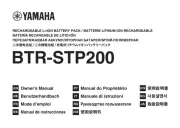
4 September 2025
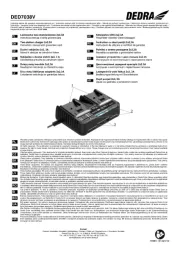
15 Juli 2025
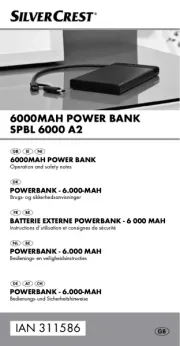
5 Juli 2025
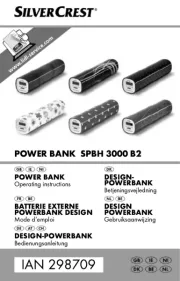
4 Juli 2025
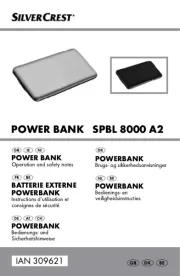
4 Juli 2025
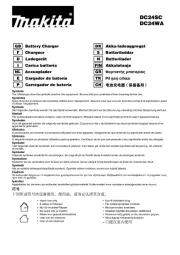
1 Juli 2025

2 April 2025
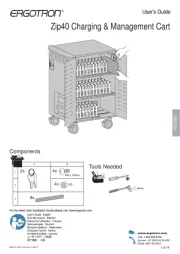
2 April 2025

2 April 2025
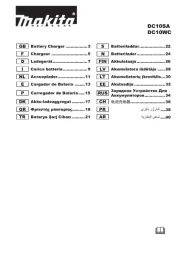
29 Maart 2025